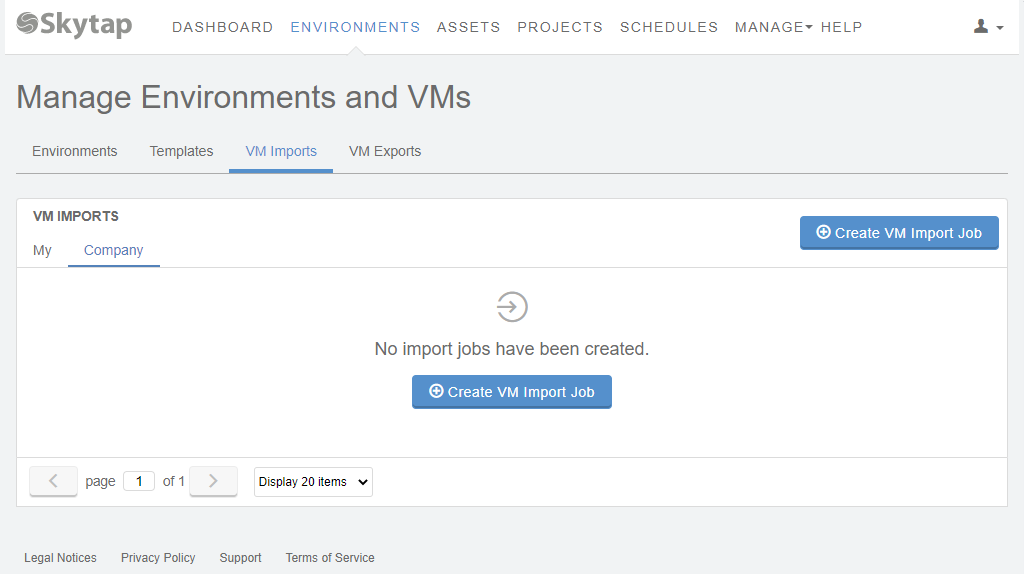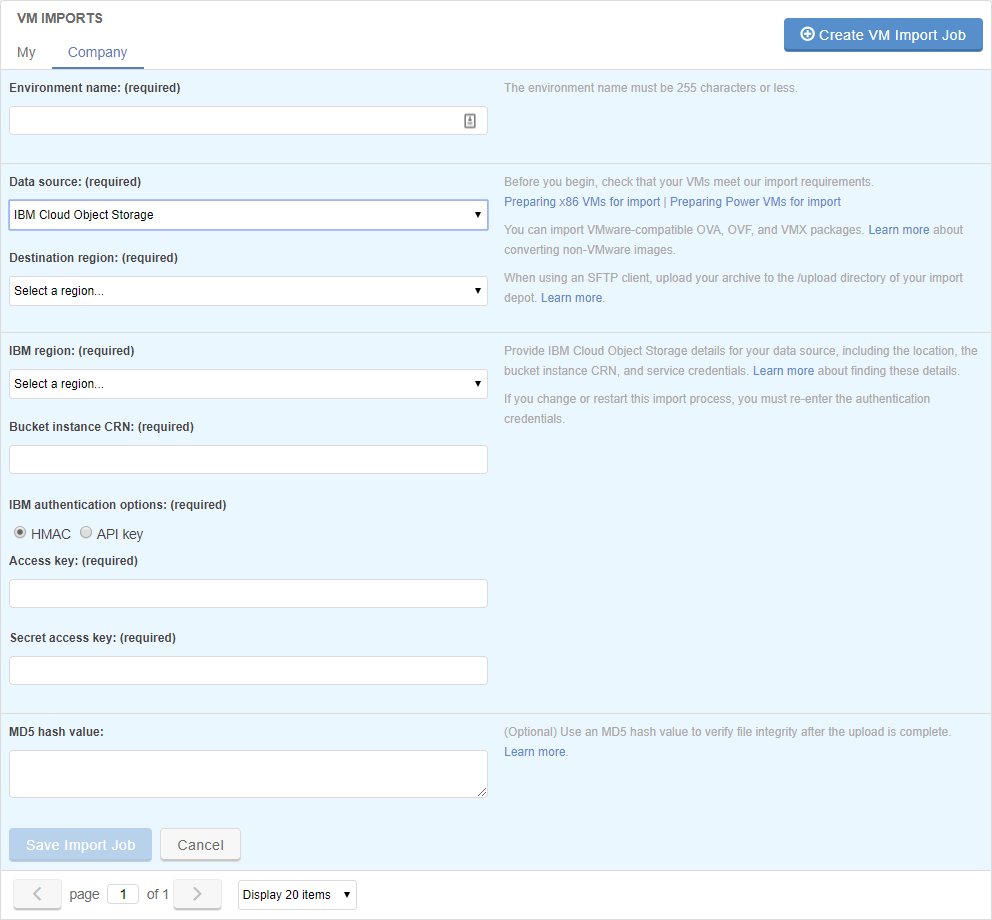Importing Power and x86 VMs using IBM Cloud Object Storage
This guide describes how to import x86 The most common CPU architecture. x86 CPUs support Windows and Linux VMs in Skytap. and Power A CPU architecture that supports IBM i, AIX, and Linux (on Power) in Skytap. VMs from IBM Cloud Object Storage using the import tool built into your Skytap account at https://cloud.skytap.com/imports.
Contents
Process overview
To import VMs into Skytap
- Export your LPARs to OVA files for import into Skytap.
- Upload or use the IBM Cloud Mass Data Migration service to move the OVA files to your IBM Cloud Object Storage bucket.
- Use the VM Imports tab in Skytap to create an import job.
- Start the import process. Skytap processes the VMs and creates virtual environments in your Skytap account.
Your customer account can have a maximum, combined total of five import and export jobs running simultaneously.
Step 1: Prepare the VMs for import
Before you begin, read Preparing Power LPARs for import into Skytap to create OVF or OVA files from your LPARs for import into Skytap.
Step 2: Stage the OVA files to your IBM Cloud Object Storage storage bucket
Either upload or use the IBM Cloud Mass Data Migration service to move the OVA files to your IBM Cloud Object Storage bucket.
- If you haven’t used IBM Cloud Object Storage before, review Getting started with IBM Cloud Object Storage.
- To directly upload OVA files into your IBM Cloud Object Storage bucket, see Upload data.
- To use the use the IBM Cloud Mass Data Migration service to move large or multiple OVA files into IBM Cloud Object Storage, see IBM Cloud Mass Data Migration.
Step 3: Create Import job
Create an import job for each OVA file that you want to import.
To create an import job
- From the Navigation bar in Skytap, click Environments.
-
Click the VM Imports tab.

The VM Imports tab notifies you if you don’t have permission to import VMs. If needed, work with your account administrator to gain access.
- Click
 (Create VM Import Job).
(Create VM Import Job). -
Provide details about the import, including:
- The Environment name (maximum 255 characters).
- The Data source for the VMs. Choose IBM Cloud Object Storage.
- The Destination region where the environment will be added.
- The IBM region that contains your IBM Cloud Object Storage bucket.
- The Bucket instance CRN The Cloud Resource Name (CRN) uniquely identifies a resource (in this case the bucket instance) in the {{site.ICloud}}. .
-
An authentication method (choose either HMAC Hash-based Message Authentication Code – A short series of characters used for secure authentication. or API key) and provide credentials for IBM authentication options:
HMAC
- Access key
- Secret access key
or
API key
-
API key
For details about where to find IBM Cloud Object Storage bucket details, see How do I find the details for my IBM Cloud Object Storage bucket?.
-
Optional: An MD5 Hash Value. For more information, see Creating MD5 hash values for VM imports.

- Click Save Import Job.
Step 4: Start the import process
Click Create environment on the Skytap Import page. Skytap imports the VM file and create your new environment.
Skytap notifies you via email when the import completes. If the import is successful, Skytap provides a link to the new environment; if the import fails, Skytap provides an error message (see Resolving import errors).
Additional information about the import process

Skytap creates a new environment from your VMs in three stages:
- Analyzing – Skytap checks the SFTP upload folder for VM files, confirms the file type, and compares MD5 hash values (if applicable).
- Importing – Skytap imports the VMs.
- Finalizing – Skytap creates the virtual environment and any associated virtual networking. Whenever possible, Skytap retains the original networking information for VMs. If the original networking can’t be found or retained, Skytap creates one or more automatic networks for the new environment.
Optional steps once the import is complete
- Install VMware Tools on all imported x86 VMs – VMware Tools provides many drivers specific to running an x86 VM operating system in a virtual environment. For instructions, see Installing and upgrading VMware Tools on Windows VMs.
- Install Skytap Helper on imported Windows VMs – Skytap Helper helps manage some settings for Windows VMs, including resolving duplicate hostname issues when an image is used multiple times in a single environment. For more information, see Synchronizing Windows hostnames and Skytap network hostnames with Skytap Helper.
- Test the VMs – Use the instructions in Testing imported VMs.
Notes
- Imports can take between 30 minutes to several hours to complete.
- If you're importing VMs on hardware version 6, 7, 8, or 9 into any region other than US-West, Skytap automatically upgrades the VM to hardware version 11 during the import process. For more information about hardware versions, see Checking VM hardware version .